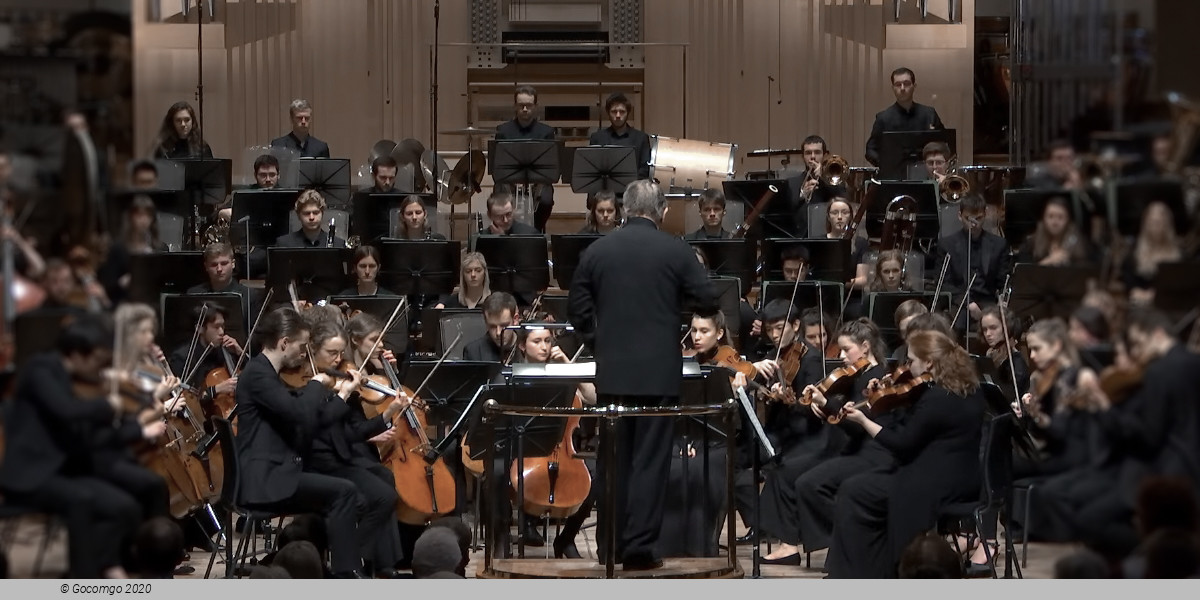Events61 results
About
Josef Anton Bruckner (4 September 1824 – 11 October 1896) was an Austrian composer, organist, and music theorist best known for his symphonies, masses, Te Deum and motets. The first are considered emblematic of the final stage of Austro-German Romanticism because of their rich harmonic language, strongly polyphonic character, and considerable length. Bruckner's compositions helped to define contemporary musical radicalism, owing to their dissonances, unprepared modulations, and roving harmonies.
Unlike other musical radicals such as Richard Wagner and Hugo Wolf, Bruckner showed extreme humility before other musicians, Wagner in particular. This apparent dichotomy between Bruckner the person and Bruckner the composer hampers efforts to describe his life in a way that gives a straightforward context for his music. Hans von Bülow described him as "half genius, half simpleton". Bruckner was self-critical of his work, and often reworked his compositions. There are several versions of many of his works.
His works, the symphonies in particular, had detractors, most notably the influential Austrian critic Eduard Hanslick, and other supporters of Johannes Brahms who pointed to their large size and use of repetition, as well as to Bruckner's propensity for revising many of his works, often with the assistance of colleagues, and his apparent indecision about which versions he preferred. On the other hand, Bruckner was greatly admired by subsequent composers including his friend Gustav Mahler.
Symphonies
"Bruckner expanded the concept of the symphonic form in ways that have never been witnessed before or since. … When listening to a Bruckner symphony, one encounters some of the most complex symphonic writing ever created. As scholars study Bruckner's scores they continue to revel in the complexity of Bruckner's creative logic."
Bruckner composed eleven symphonies, the first, the Study Symphony in F minor in 1863, the last, the unfinished Symphony No. 9 in D minor in 1887–96. With the exception of Symphony No. 4 (Romantic), none of Bruckner's symphonies has a subtitle and in the case of those that now do, the nicknames or subtitles did not originate with the composer.
Style
Bruckner's symphonies are scored for a fairly standard orchestra of woodwinds in pairs, four horns, two or three trumpets, three trombones, tuba (from the second version of the Fourth), timpani and strings. The later symphonies increase this complement, but not by much. Notable is the use of Wagner tubas in his last three symphonies. Only the Eighth has harp, and percussion besides timpani (though legend has it the Seventh is supposed to have a cymbal crash at the exact moment Wagner died. Bruckner's style of orchestral writing was criticized by his Viennese contemporaries, but by the middle of the twentieth century, musicologists recognized that his orchestration was modeled after the sound of his primary instrument, the pipe organ, i.e., alternating between two groups of instruments, as when changing from one manual of the organ to another.
Structure
The structure of Bruckner's symphonies is in a way an extension of that of Beethoven's symphonies. Bruckner's symphonies are in four movements.
- The first movement, in 4/4 or 2/2, is, from Symphony No. 2 on, an allegro in modified sonata form with three thematic groups. The first group is mostly displayed in piano or pianissimo on a tremolo of the string instruments and is, after a long crescendo, repeated in tutti. The second group, melodious and in A-B-A’ lied form, is mostly of contrapuntal structure. The third group, mostly rhythmical and often in unison, is sometimes a variant of the first group, as in Symphony No. 4. The often extensive development is followed by a modified and somewhat shortened reprise and a powerful coda.
- The second movement, mostly an adagio in 4/4, is generally in ABA’B’A’’ lied form. The first thematic group, sometime rhythmical, is developed and magnified in the third and fifth parts. The second group is mostly a melody in cantilena form. The adagio is put in third position in the first version of Symphony No. 2, and in Symphony No. 8 and Symphony No. 9.
- The scherzo in 3/4 and in minor mode is often fiery. The, sometimes very short, trio is more melodious and often in Ländler form. The da capo reprise is, in Bruckner's early symphonies, ending with a short, powerful coda. The revised version of the Symphony No. 4 features a scherzo – the "Hunt scherzo" – in which the outer sections are in 2/4 and in major mode.
- The Finale, in 4/4 or 2/2, is, as the first movement, an allegro in modified sonata form with three thematic groups. The first group, often a kind of introduction, is followed by a second, melodious and often contrapuntal group, and a third, rhythmical and often in unison, group, which is sometimes a variant of the first group, as in Symphony No. 2. The development, often of dramatic character, is followed by a less formal reprise, which is sometimes inverted (C’-B’-A’) as in Symphony No. 7, and a coda in which the first thematic group of the first movement is magnified. In the coda of Symphony No. 8, the first thematic group of all four movements are magnified.


